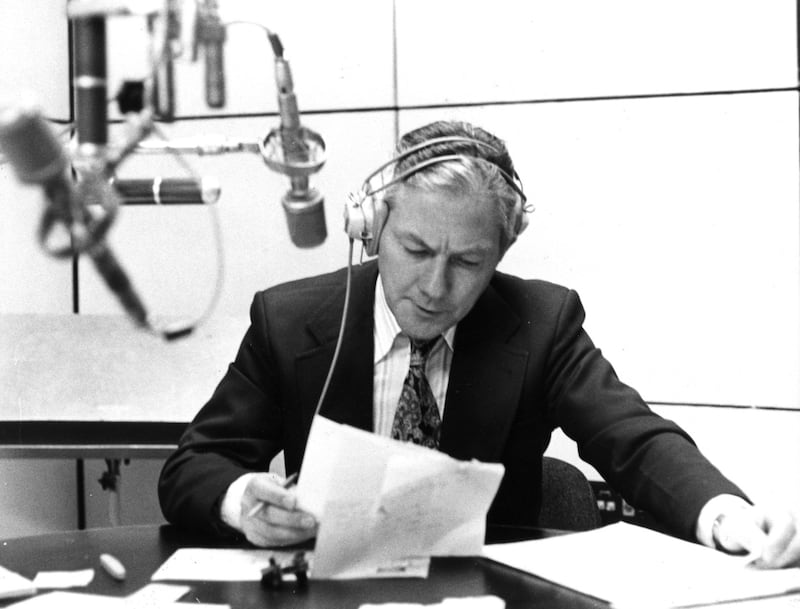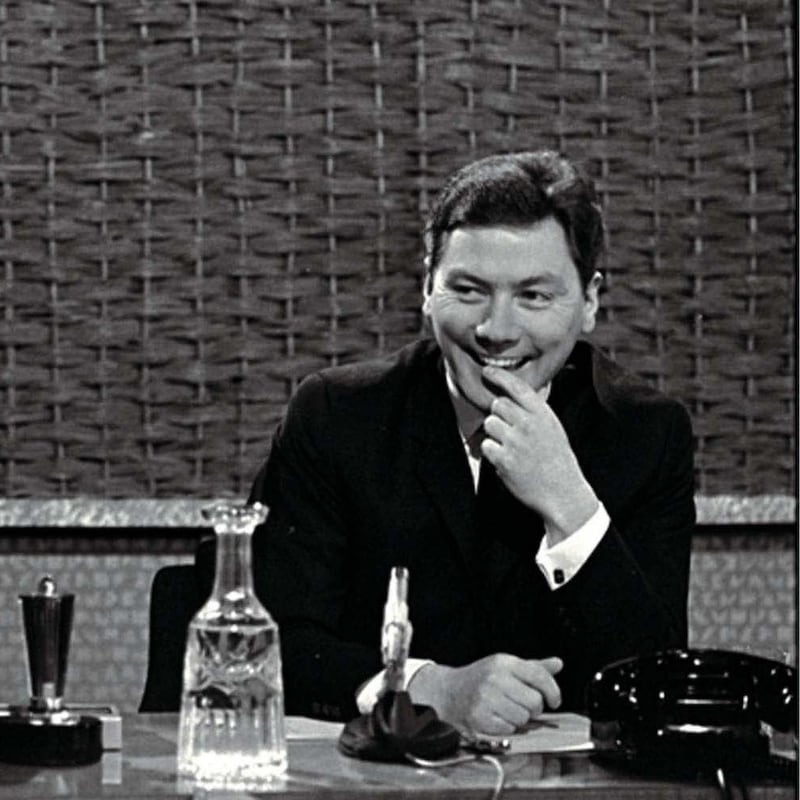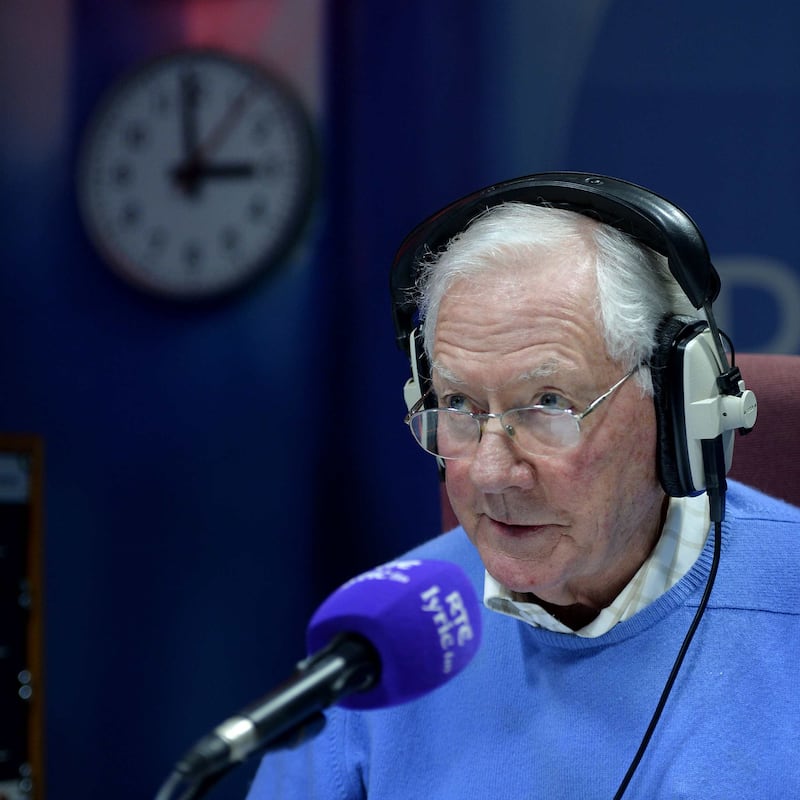When Gay Byrne set out on his career path in the early 1960s he had no game plan; nor did he have any notion of the role he would eventually play in the modernisation of Irish society. His broadcasting career coincided with the opening of Telefís Éireann in an Irish television landscape so limited as to be unrecognisable today.
Many viewers lived in what was known at the time as “single-channel land”. Cable television was unknown, as was satellite broadcasting. Moreover, programmes were not repeated, nor had viewers any facility to record them: this was before the RTÉ Player, and decades before YouTube’s capacity to capture a telling moment and send it viral.
Homes had only one television set and it was viewed communally. Byrne’s viewers, as he hosted The Late Late Show each Saturday night, were, in effect, a captive audience. He knew he could not please all of the people all of the time: but he was determined to please as many as possible over his two-hour programme. He had a policy of never pre-announcing a guest or topic – this with the aim of making the programme unmissable. If there was an unforgettable moment – and there often was – viewers had either seen it live or had indeed missed it.

High audience ratings
Fiercely competitive, Byrne coveted his high audience ratings and wanted his programme to be number one. He knew he could attract an audience with a conventional chat-show formula; but he then set out to woo the intelligentsia, hoping they could not ignore the programme’s growing reputation for open-ended debate. Viewers who normally ignored politics and current affairs programmes found they could enjoy topical controversies provided Byrne was the ringmaster.
The appeal of the programme at this juncture was caught by the novelist Colm Tóibín looking back to his boyhood in Enniscorthy when he remembered being invariably sent to bed when the programme came on. He would ask: “When I’m what age will I be able to watch The Late Late Show?” Joining the family to view the programme became a rite of passage. Tóibín recalled that its special appeal was the propensity of its guests to say “whatever things that were unsayable in Irish life”.
Occasionally, Gay Byrne would ask the studio control box whether he couldn't have extra time to extend the debate. This was unknown in other countries
The wider audience manifestly liked hearing what had been unsayable for so long. And there was no shortage of topics where debate had been stifled: censorship, corporal punishment, the GAA ban on foreign games, compulsory Irish, homosexuality, clerical celibacy, pornography, prostitution and much more. The so-called liberal agenda provided a list all of its own: family planning, divorce, adoption, premarital sex, single mothers. Women’s lib would presently add a fresh slant to many of these issues.
Some of the campaigners on these subjects were calling for changes in the law; in other cases they sought a change in behaviour or culture. The old Ireland had considered these topics taboo. They would rather they were not debated at all on television. And their gatekeepers had delivered such a policy on radio for decades.
But The Late Late Show was live and had open spaces, by now all of two hours every Saturday night. Occasionally, as the programme was concluding with a heated controversy, Gay Byrne would ask the studio control box whether he couldn’t have extra time to extend the debate. This was unknown in other countries. It all added to the sense of being unpredictable. There was a frisson of excitement about the programme. All human life was there.
The most innocuous episode could trigger a national rumpus. It could happen by chance and become a Late Late Show moment. One such happened when a harmless quiz to test how well couples knew their own spouse involved a husband being asked what colour his wife’s nightie had been on their wedding night. His answer that it had been transparent led to much laughter from the studio audience. When his wife was asked the same question she replied that she hadn’t worn one – more laughter.

The Bishop of Clonfert, Dr Thomas Ryan, was watching. This proved to be unfortunate – for the bishop. Unlike the studio audience, he was not amused. He found the broadcast “most objectionable” and phoned the Sunday Press to say so – which provided the paper with its lead story the following morning.
The modern generation finds this whole episode unfathomable. Yet it became the stuff of legend, popularly known as “The Bishop and the Nightie”. Later, his friends would regret that the bishop had made himself a laughing stock. But this was a retrospective verdict. At the time he was supported by half of those who had telephoned RTÉ and by some town councils, vocational education committees and GAA boards.
Risible
That it was all taken so seriously is now considered risible. But one should remember that, for example, The Irish Times did not join in any collective laughter. Its editorial allowed that the bishop was “killing a fly with a sledgehammer”, but still adjudged RTÉ to be guilty of “a lapse of taste” – which was also the verdict of the RTÉ Authority.
At that time, The Late Late Show was broadcast on Saturday nights and whatever controversy arose could well be the talking point of the congregation after Sunday Mass. Occasionally, Byrne could even be the target of the preacher’s sermon. What the preachers did not always recognise was that their congregations would, likely as not, take Byrne’s side. Moreover, the clergy were slow to notice that Byrne was incrementally usurping their role.
He would prove to have a surer sense than they had of public opinion. Where they remained resolutely behind the curve, Byrne seemed to be always ahead of it. Had not Desmond Forrestal, priest, playwright and broadcaster, written that during its first decade The Late Late Show had “probably done more than any other single factor to form the national consciousness on a hundred different topics”?
It is noteworthy that Forrestal credits the programme with shaping opinion on so many issues. The phrase was not then used but many women viewers were essentially saying “Me Too” as disclosures and discriminations were debated on the airwaves.
John Naughton, long-time television critic of the Observer, wrote that viewing The Late Late Show was akin to listening to a nation talking to itself
Within about a decade, the question being asked on contraception on televised debates morphed from “Is it a sin?” to “Is it a crime?” to “Is it not a civil right?” Such a shifting of the gears well illustrates the rapidity of the change in Irish society at that time.
Meanwhile, there is evidence that women of childbearing years were already, in their behaviour, ignoring or circumventing the custodians of the status quo – whether bishops, politicians, judges or doctors.
Indeed, these latter groups were complacent and slow to sense the quicksand on which their authority rested. Byrne did sense it; in particular his intuition on where women stood on all of these hot topics seemed far ahead of the leaders of church and State.
The development of the Gay Byrne Show on radio would soon hone his judgment on this dimension. And it often gave him the role of a confessor to those listeners who wrote letters or telephoned this programme.
John Naughton, long-time television critic of the Observer, wrote that viewing The Late Late Show was akin to listening to a nation talking to itself. He reckoned the programme “the only example in history of an intelligent chat show with a large audience”. This was an understatement. Probably no society anywhere had such a high proportion of its population watching such a programme. That it achieved this over so many decades underscores its extraordinary reach.
Not a radical
Byrne himself was not a radical. He could be conservative on many issues. But he was not unaware that he had remoulded the chat show and created a bespoke television vehicle peculiarly suited to the relatively homogenous Irish audience. In taking this course he had faced opposition – and not only from the custodians of the status quo. There were also turf wars within RTÉ, and current affairs programmes disliked Byrne’s encroachment on what they reckoned was their territory.
Files in the National Archives record Byrne in November 1967 as having telephoned to request a meeting with the then taoiseach Jack Lynch to discuss cabinet members’ participation in The Late Late Show.
Byrne had explained that he hoped to get away from light entertainment and to shape his programme into one “in which matters of public interest would be discussed in a serious manner”.
Lynch had no interest. A note on the file records his instruction that Byrne be informed that the taoiseach did not approve of any such participation and that there was “already provision for political discussions”. RTÉ, for its part, faulted Byrne for what it saw as a “solo run”.

With this response Lynch revealed an attitude of aloof disdain for the programme which was then commonplace and which it took Byrne many years to overcome. Lynch could not have guessed that more than 40 years later Fianna Fáil would invite Byrne to be its nominee for the 2011 presidential election.
An earlier indication of Byrne’s acceptance by the establishment came from the Trinity historian and long-serving member of the RTÉ Authority, TW Moody. At a meeting of the authority in 1967, Moody complained that Byrne was “just not intellectually fit” to cope with a programme on racism: a decade later after a debate on nuclear energy, Moody wrote congratulating him on his exceptional combination of professional skill “with perceptiveness, sincerity, sense of responsibility and fair-mindedness”.
Irish attitudes
Byrne was the dominant broadcaster in Ireland during the last decades of the 20th century. He is often credited with the transformation in Irish attitudes during that period. This is too simplistic. Change came through an opening up of debate in all media. And among the most powerful agents of change was the willingness of the wider Irish public to embrace it.
But they in turn were fortunate that in Byrne Irish society had a consummate broadcaster, with an intuitive sense of what interested the public. In Byrne’s heyday, The Late Late Show seemed to be communicating with the whole Irish nation. Arguably, nothing like it had happened since the days of Daniel O’Connell’s monster meetings in the 19th century.
Byrne’s impact had been incremental and for a considerable period he could be taken for granted.
But retrospectively, it seems clear that he – and we – had the good fortune that he was the right man in the right place at the right time to play an exceptional role in late 20th-century Irish history.
John Bowman is a broadcaster and historian. He is author of Window and Mirror: RTÉ Television, 1961-2011












